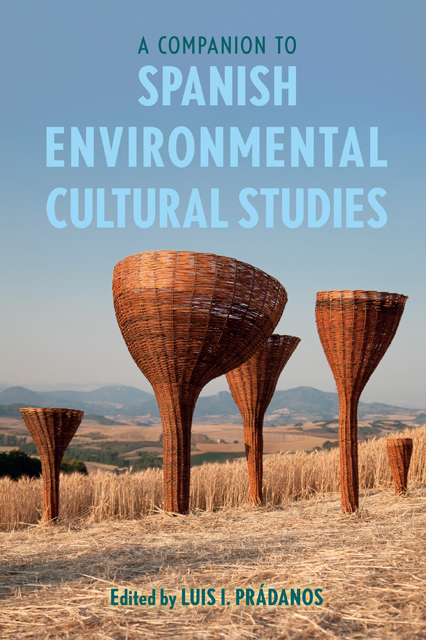Book contents
- Frontmatter
- Contents
- List of Illustrations
- List of Contributors
- Note on the Translations
- Acknowledgements
- Introduction: Spanish Environmental Cultural Studies
- Part I Environmental Cultural History and Political Ecology
- Part II Water and Power
- Part III Ecologies of Memory and Extractivism
- Part IV Animal Studies and Multispecies Ethnographies
- Part V Food Studies and Exploitative Ecologies
- Part VI Ecofeminism
- Part VII (Neo)Colonial and Racialized Ecologies
- Part VIII Tourism and the Environmental Imagination
- Part IX Eco-Mediation and Representation
- Part X Trash and Discard Studies
- Bibliography
- Index
23 - Enlightened Waste: Burials, Disease, and Public Health in Eighteenth-Century Spain
Published online by Cambridge University Press: 08 June 2023
- Frontmatter
- Contents
- List of Illustrations
- List of Contributors
- Note on the Translations
- Acknowledgements
- Introduction: Spanish Environmental Cultural Studies
- Part I Environmental Cultural History and Political Ecology
- Part II Water and Power
- Part III Ecologies of Memory and Extractivism
- Part IV Animal Studies and Multispecies Ethnographies
- Part V Food Studies and Exploitative Ecologies
- Part VI Ecofeminism
- Part VII (Neo)Colonial and Racialized Ecologies
- Part VIII Tourism and the Environmental Imagination
- Part IX Eco-Mediation and Representation
- Part X Trash and Discard Studies
- Bibliography
- Index
Summary
In the eighteenth century, churches were an environmental hazard site. A principal culprit was the tradition of burying the dead inside churches, under their floors, and in adjacent graveyards. Sepulchral fumes turned the sacred interior humid and putrid, and the lack of ventilation stagnated the foul air, creating a serious health crisis for the clergy and their congregations. The situation was no better outside. The narrow streets and the density of eighteenth-century urban centers were hardly conducive to a ventilated cemetery within city walls. Moreover, graveyards were not enclosed spaces but rather accessible and mixed-use areas. Alongside the dead, the living reunited, celebrated assemblies, danced, put on theatrical representations, and organized open-air markets. At other times the cemetery was turned into a workshop to thresh wheat. The spiritual and popular defense of this cohabitation produced a massive accumulation of putrefied cadavers that contaminated the air with toxic discharge. By the eighteenth century, the smell of the decaying corpses was a constant reminder of a persistent problem that everyone, both laypeople and clergy, caught a whiff of but easily avoided.
Odors form part of daily life. We know little about what commoners thought of the foul odors in general and in churches, but Spain was not a clean country, and visitors quickly detected the stench and recorded it in their writing. In 1735, the Prussian traveler Charles Louis von Pöllnitz experienced first-hand “the unpleasantness of walking about the streets of Madrid:”
A quantity of all sorts of garbage are flung out of the houses, which decays … the air of Madrid is so corrosive … The diurnal smell is, however, nothing to that which one has to endure on Feast-days; for usually the streets are then swept, and everything in them is stirred up, and it is difficult to put up with it, especially if the weather should be dry. For everything is decayed and changed into a fine dust … which penetrates everywhere.
No sooner had the Italian writer Joseph Baretti, en route from London to Genoa in 1747, entered the Spanish capital than he was overwhelmed by the “horrible stink” and “fetid vapours exhaling from numberless heaps of filth lying all about.
- Type
- Chapter
- Information
- A Companion to Spanish Environmental Cultural Studies , pp. 247 - 253Publisher: Boydell & BrewerPrint publication year: 2023

